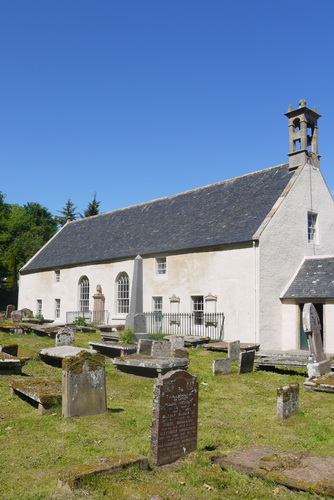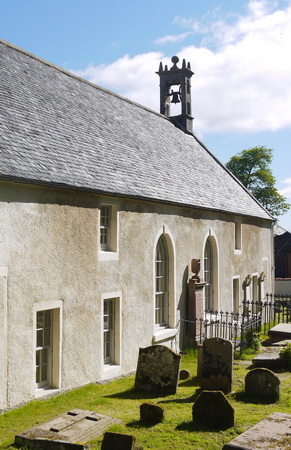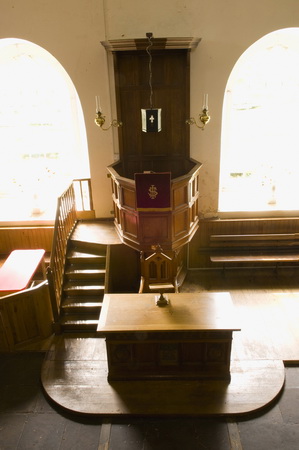 Contractors completing a three-year project to repair and conserve the Category A-Listed Cromarty East Church have been praised for their work.
Contractors completing a three-year project to repair and conserve the Category A-Listed Cromarty East Church have been praised for their work.
As Cromarty’s former parish church and historic place of worship, the East Church reflects the changing fortunes of local people and tells the story of the community through the centuries. Its heritage value though extends far beyond its Highland location and the building is considered to be “of exceptional interest in a Scottish as well as a local context.”
Past descriptions of the East Church as “the epitome of a post-Reformation Church” and “a true Presbyterian edifice” are, however, misleading, as the extensive work uncovered an earlier and more complex history than had previously been known. Once thought to date from the early 17th century, archaeological excavations during the project established the church’s medieval origins with the discovery of multiple burials beneath the floor together with a kerb of carved stones marking position of the altar at the east end.
The development of the church through the 17th and 18th centuries resulted in a harled, slated and T-plan building which largely escaped later extensive internal remodelling, leaving the interior intact, with pews, fixtures and fittings giving an appearance of antiquity so often absent in Scottish parish churches.
From the 1930s the East Church was one of two Church of Scotland churches in the small town. With one congregation supporting two buildings, money for repairs and maintenance was in short supply. By the 1990s the ageing fabric was riddled with damp and rot, and a decision was taken to dispose of the building. Recognising its significance, the East Church was acquired in 1998 for £1 by the newly-formed Scottish Redundant Churches Trust (SRCT), established to take into care places of worship of outstanding national importance and safeguard them for future generations.
For 10 years the SRCT worked with local people to keep the East Church wind and watertight and to make it accessible to the community and to the many hundreds of visitors who came to experience the unique atmosphere of the building. The plight of the church came to the attention of the nation in 2006 when it was a finalist in the BBC ‘Restoration Village’ series.
Funding success followed in 2007 when the Heritage Lottery Fund awarded a major grant towards the £1.3 million project to repair and conserve the church, its contents and the surrounding B-listed graveyard. Major grants were also awarded by Historic Scotland and The Highland Council.
Main Contractor for the conservation project is Laing Traditional Masonry Ltd; Architects are LDN (Forres); Quantity Surveyors are Torrance Partnership; and Structural Engineers Mott MacDonald.
“We were extremely fortunate to have Laing Traditional Masonry as main contractor. They did a great job and have a superb reputation, not only for the quality of their work, but also for their commitment to training apprentices – the next generation of skilled of skilled stonemasons” said Victoria Collison-Owen, SRCT Director.
“What was fantastic about Laing Traditional Masonry is that right from the start in 2008; they understood the importance involving local people and they worked with our Community & Education officers to give guided tours which gave a real sense of ownership. The local primary school made regular visits and saw the painstaking process of stripping back and carefully repairing the building. All the children learned so much and loved every minute of it.”
The project was carried out with the intention of retaining as much of the original fabric as possible and using traditional materials like lime to replace cement-based products that had caused damage to the building. Apprentices worked alongside skilled craftsmen and training courses were held to allow contractors throughout the Highlands to learn about working with lime.
“The project is not just about restoring this building, but also investing in skills to allow historic buildings to be repaired in the future” said Victoria Collison-Owen.
In addition to replacing cement-based harl with lime to allow the building to ‘breathe’, the drainage around the church was improved to direct water away from the foundations. The roof was stripped and re-slated using reclaimed slates.
All the timber sash and cash windows were overhauled, with historic glass being carefully retained and modern glass replaced with reclaimed horticultural glass. Cracked historic glass was repaired rather than replaced in order to keep the maximum amount of original material.
“Undertaking the work has been a long and complex process.” said Victoria Collison-Owen. “We set out to repair the building and to tackle the ravages of time, damp and rot whilst ensuring that the unique character of the East Church remained intact. We have achieved that thanks to a dedicated and skilled team who rose to an almost impossible challenge. The people of Cromarty, and visitors to the East Church, are now able to see the church as it should be and to enjoy what is a very special building and a remarkable part of Scotland’s ecclesiastical heritage.”






